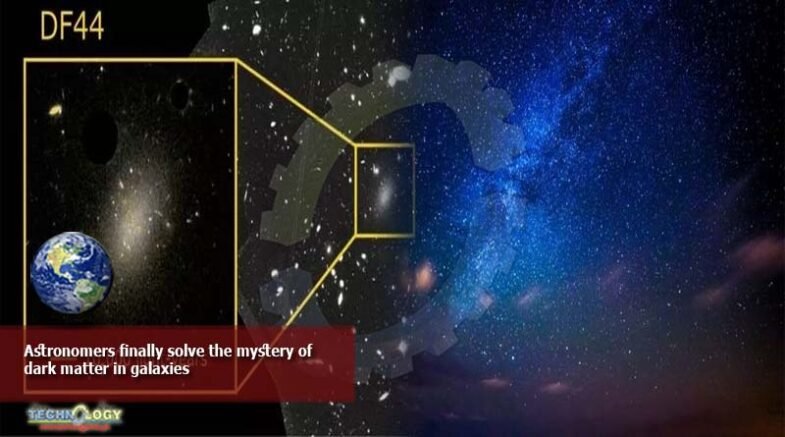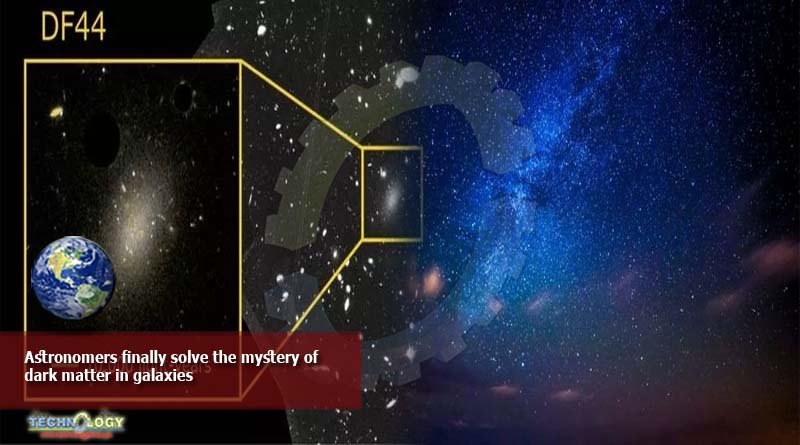ASTRONOMERS have solved the mystery of a strange galaxy which seemingly had much more dark matter in it than was understandable by scientific estimates. Despite not knowing what exactly dark matter is, experts do know that it is essential to the formation of galaxies. Dark matter cannot be seen – it emits no light – but scientists know it is there as something is within galaxies which is not visible to the human eye or using scientific instruments.

It had been thought that a galaxy usually has anywhere between 10 and 300 times more dark matter than the quantity of visible matter.
However, a discovery of a galaxy in 2016 called Dragonfly 44 blew that theory out the window when experts found it had 10,000 times more dark matter than visible matter, such as stars.
Scientists have been working hard since to discover whether Dragonfly 44 was an anomaly, or whether there was something wrong in their observations.
Now, a team from the University of Groningen, Netherlands, with participation by the Instituto de Astrofísica de Canarias (IAC) and the University of La Laguna (ULL), has cracked the code.
The researchers calculated the amount of visible matter, which comes in the form of stars and dust, and found it is much less than previously thought.
Whereas the Milky Way, for example, has around a hundred thousand million stars, Dragonfly 44 only has around 100 million – a thousand times fewer than previously thought.
The team were able to decipher this by analysing the amount of globular clusters – dense areas of stars – and determined there were only 20.
As such, there is only around 300 times more dark matter than visible matter, meaning Dragonfly is neither unique nor an anomaly.
Ignacio Trujillo, an IAC researcher and a co-author of the research, said: “The fact that in our work we found only 20 globular clusters, compared with the 80 previously claimed, reduces drastically the amount of dark matter which the galaxy is believed to contain.
“Moreover, with the number of globular clusters we found, the amount of dark matter in Dragonfly 44 is in agreement with what is expected for this type of galaxies.
“The ratio of visible to dark matter is no longer 1 in 10,000 but one in 300.”
Teymoor Saifollahi, researcher at the Kapteyn Institute, added: “Dragonfly 44 has been an anomaly all these years that could not be explained with the existing galaxy formation models.
“Now we know that the previous results were wrong and that DF44 is not extraordinary. It is time to move on.”
Michael A Beasley, another IAC researcher, specialist in globular clusters, said: “Our work shows that this galaxy is not so singular nor unexpected.
“That way the models of galaxy formation can explain it without the need for modification.”
Originally published by Express
